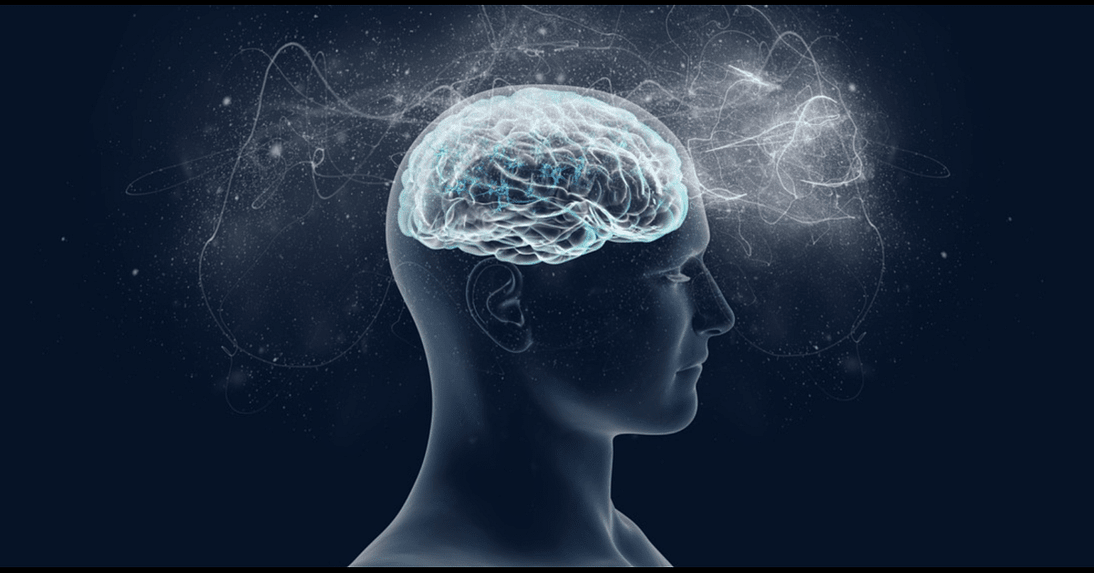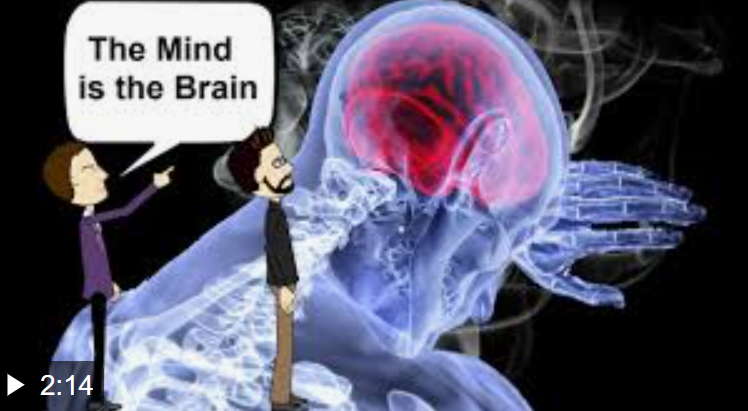
The English philosopher Philip Goff is very unhappy with the identity theory of mind. In fact, he calls it the “brute identity theory”.
In Goff’s own words:
“The brute identity theory is very unsatisfying. Science is supposed to offer explanations I want to know how processes in the brain result in a subjective inner world of feeling and experience.”

So, according to Goff, there’s a far-too-quick move from the fact that pain Y is “systematically correlated with brain state X”, to the conclusion that
“we can [therefore] simply assert the identity and the case is closed”.
No, the case isn’t closed simply because of a (as it’s often put) “mere correlation”. Hopefully, that will be shown in this essay.
In any case, Goff isn’t discussing whether “the brain generates the mind” (or vice versa): he’s discussing whether a (particular) conscious state can ever be identical to a (particular) brain state. To repeat. Goff isn’t questioning that the brain somehow generates pain Y. He’s asking his readers whether or not pain Y can be (or actually is) identical to brain state X.
In terms of personal phenomenology (or subjects’ verbal reports of their experiential states), it’s easy to see why some subjects (i.e., usually those who’ve read stuff about this particular philosophical debate) don’t see their pains as being identical to any of their brain states (or, indeed, to anything physical).
(See final section on Owen Flanagan’s naturalist view on the view-from-the-inside.)
So let’s offer some details here.
Not Just “Mere Correlations”

The following is how the American experimental psychologist Edwin Boring (as quoted by U.T. Place) put it in the 1930s:
“To the author a perfect correlation is identity. Two events [i.e., a conscious state and a brain state] that always occur together at the same time in the same place, without any temporal or spatial differentiation at all, are not two events but the same event. The mind-body correlations as formulated at present, do not admit of spatial correlation, so they reduce to matters of simple correlation in time. The need for identification is no less urgent in this case.”
This is a very strong articulation of the identity theory. The strong line above attempts to explain why “perfect correlation” is, in fact, “identity”.
Of course, one “side” of this identity is experienced from the inside (or from the “first-person perspective”). So it may seem as if there’s no genuine identity at all. However, why allow personal phenomenology (or the verbal reports of subjects) to be ontologically decisive here?
Now let’s offer more detail here specifically on Edwin Boring’s reference to “two events that always occur together [ ] in the same place”.
Take the words of the British-American philosopher Peter Carruthers (1952-). He puts the position of those philosophers who argue against identity in the following way:
(1) All brain-states must occupy some particular position in space.
(2) It is nonsense (meaningless) to attribute any particular spatial position to a state of consciousness.
© So (by Leibniz’s Law) conscious states cannot be identical with brain-states.
Premise (2) is just an assumption (i.e., as we’ve seen with Edwin Boring). But, of course, if it’s taken to be true, then © may follow… That said, the conclusion may not follow even if (2) is taken to be true.
Now the following words are from the Canadian philosopher Paul Churchland on the same subject of spatial location:
“[I]f mental states are identical with brain states, then they must have the very same spatial location.”
In other words, if mental states are indeed brain states, then it logically follows that they must have a spatial location. However, viewing those conscious states from the inside (i.e., psychologically and experientially) makes it seem otherwise.
Identity, Not Causation

Let’s now cover the position of the Canadian philosopher Paul Churchland.
The cognitive scientist Margaret Boden puts Churchland’s position in this way:
“For Churchland, this isn’t a matter of mind-brain correlation: to have an experience of taste simply is to have one’s brain visit a particular point in that abstractly defined sensory space.”
This means that Churchland doesn’t simply offer us those “mere correlations” again (i.e., the correlations which anti-physicalists and others sniff at).
What’s more, it’s understandable that Churchland would want to go beyond mere correlations. Here’s one reason why.
If neuroscientists and philosophers only stress correlations, then (arguably) you’ll always need to deal with David Chalmers’ very own “hard problem of consciousness”. After all, if brain state X is always correlated with the bitter taste of a lemon, then Chalmers can still ask the following question:
Even if the taste of lemon is always correlated with brain state X, then why does X give rise to that particular taste?
Just to offer a little bit more detail on the possibility of identity.
The following is how the philosopher Valerie Gray Hardcastle went on to put it some 60 years after Edwin Boring (as quoted earlier):
“[I]f you find structural isomorphisms between our perceptions and twitches in the brain, then that is taken to be a good reason to think that the mind is nothing more than activity in the brain. (What other sort of evidence could you use?)”
Of course, there can be isomorphisms (as with correlations) between “perceptions and twitches in the brain” without the former being identical to the latter. However, this isn’t an a priori argument which somehow automatically follows the a posteriori data. In other words, Valerie Hardcastle wasn’t arguing that these correlations alone mean that we should accept an identity. Instead, they give us very good reasons to accept an identity.
Flanagan on a Naturalist View-From-the-Inside

We’ve seen that the view-from-the-inside does indeed create problems for both neuroscience and for physicalism. However, according to the philosopher Owen Flanagan, it doesn’t also provide problems for naturalism itself…
And neither does the view-from-the-inside show us that conscious states aren’t identical to brain states.
So here’s Flanagan stating what he deems to be the naturalist view on the view-from-the-inside:
“[Y]our experiences are yours alone; only you are in the right causal position to know what they seem like.”
And, of course, “[n]othing could be more important with respect to how your life seems and how things go for you overall”.
In more detail:
“It is because persons are uniquely causally well connected to their own experiences. They, after all, are the ones who have them. Furthermore, there is no deep mystery as to why this special causal relation obtains. The organic integrity of individuals and the structure and function of individual nervous systems grounds each individual’s special relation to how things seem for him [].”
Flanagan then comes at (roughly) the same issue (or problem) from a different angle.
Flanagan argued that “‘[a]n experience of red’ is not in the language of physics”. However, “an experience of red is a physical event in a suitably hooked-up system”.
Flanagan also says that
“no linguistic description will completely capture what a first-person experience of red is like”.
So there are two languages (or simply two different sets of words) being used and discussed here. That’s for two main reasons. (1) The language of physics isn’t designed to capture an individual’s “experience of red”. (2) The individual himself doesn’t use a determinate language about his own conscious states or experiences — at least not over time.
Finally, in terms of an overall naturalistic theory of the view-from-the-inside generally:
“A theory of experience should not be expected to provide us with some sort of direct acquaintance with what the experiences it accounts are like for their owners.”
Flanagan concludes:
“Therefore, the experience is not a problem for metaphysical physicalism.”
Of course, anti-physicalists — as well as those people who’re keen to point out (as it’s often put) “the limits of science” — do believe that science should provide such a theory. Or, more accurately, they conclude that because (in their eyes) science doesn’t provide such a theory, then that must mean that consciousness (or experience) isn’t physical at all…
Hopefully, it’s been shown that this conclusion simply doesn’t follow.








No comments:
Post a Comment